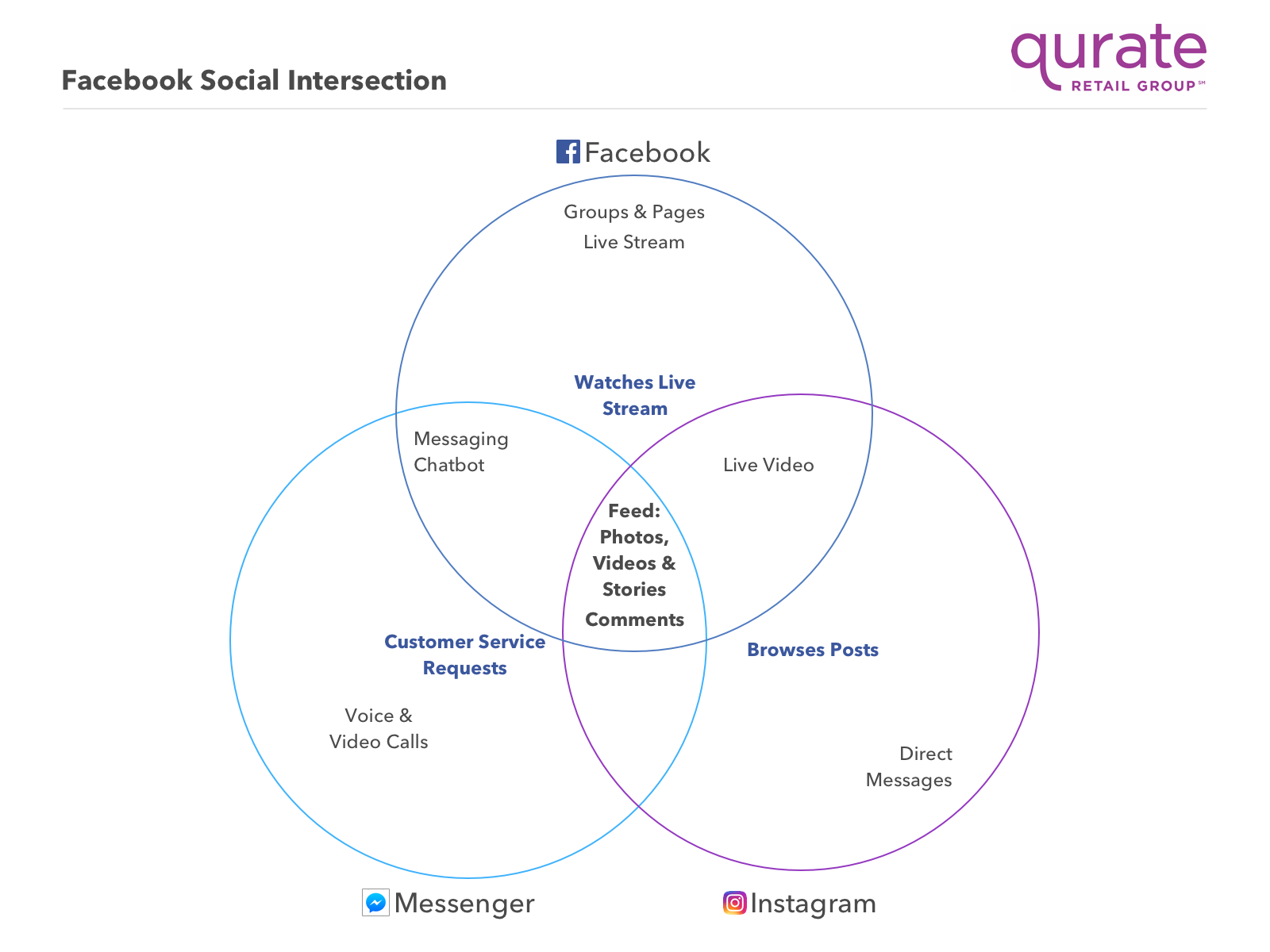Facebook Messenger Chat Bot Platform Strategy & Design
*QVC's Messenger Bot Experience
Project Overview
QVC (rebranded as Qurate after it acquired HSN, with a combined $7.5 billion in online sales and $4.7 billion in mobile commerce revenue) needed to extend its social media marketing reach to better connect to a younger demographic and help to change its public perception with the help of Facebook Messenger and its automated chatbot capabilities. Despite being the third largest e-commerce and mobile commerce retailer in North America (behind Amazon and Walmart), it struggled to widen its customer reach and base with younger, more technically-savvy shoppers. As an early pioneer of live, shoppable TV (and No. 1 in global video commerce with $14 billion in revenue, reaching more than 360 million homes via 17 broadcast networks and broadcasting more than 145 hours of live content per day), it sought to apply its innovative product culture to social (#TLDR…not so fast or easy).
As Lead UX, I helped define the vision and experience to expand brand reach and drive engagement and sales. I also worked cross-functionally to help create the optimal experience and socialize the new technology to departments’ standard operating practices, including Social, Marketing, Creative, and Customer Service teams.
Timeline: Dec 2016 - June 2017
Project Name: Q-bot (later branded as Quinn)
Product Team: Lead UX Designer (me), Product Manager, Consumer Insights, Project Manager, Dev Lead
Platform: iOS / Web
Tools: Adobe Illustrator, Sketch, Principle for Mac, InVision App
Link: QVC’s Facebook Messenger Bot | View Marketing Page
Outcome
Its launch and success proved less impactful than initially hypothesized, resulting in a doubling down of QVC’s core competency – Livestreaming and Social TV.
Methodology & Process
Scrum (Agile), Product-based Journey Team
Discover > Research > Ideate & Design > Test > Refine > Develop & Ship
A few key targets were identified from the start of the project to kick things off.
Some of the team’s early MVP objectives used to validate the platform as a right fit for QVC.
Initial rough draft / brainstorming criteria for the engagement’s success.
A competitive landscape audit revealed customer behaviors unique to Facebook Messenger.
Usability screening helped us map our approach to real user needs.
Mapping the customer journey from early discovery to returning customer helped identify key opportunities and challenges.
High-level design output of the customer mapping work to validate and socialize with the broader team.
Core customer (aka “Core Shoppers”) user flow mapping out the customer’s key touchpoints to both inform the experience and sprint planning.
New customer (aka Persuadables) user flow mapping out the customer’s key touchpoints to align our model and further design efforts.
Extended Social Customer Mapping
*Social Customer Empathy Map
A customer decisioning matrix for the “Persuadable” customer segment to continue unpacking this audience segment.
Plotting the critical intersections of QVC customers on Facebook’s platforms for further validation and confirmation of our features.
IA, Interaction Design & Prototyping
Experience mapping and information architecture, to low-fidelity prototyping to explore interaction design patterns and test for confirmation of our user flows.
*QVC Messenger Experience Map
Rapid prototyping for user testing and interaction design
Core customer flow, based on the Transactional Message model - link (InVision prototype)
Final High-Fidelity Designs
A sampling from some of the final design comps.
















